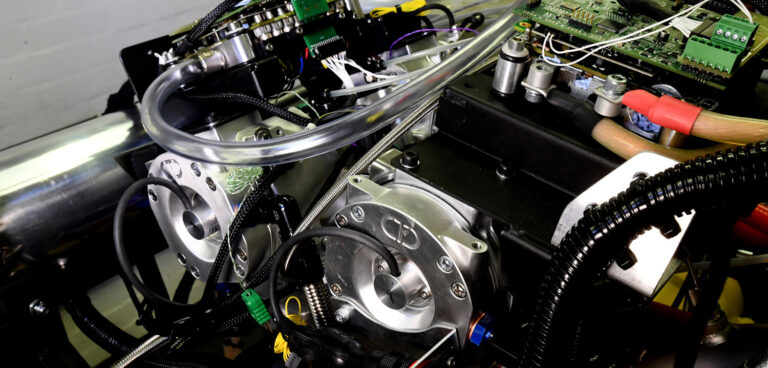Brunel University London is the first to begin researching future powertrain concepts using Camcon Automotive’s new Single-Cylinder Intelligent Valve Technology (SCI). The system uses the company’s Intelligent Valve Technology (iVT) and is intended to significantly speed up OEM and Tier 1 engine development, helping meet upcoming emissions regulations while also reducing cost.
Brunel’s Center for Advanced Powertrain and Fuels (CAPF) plans to use SCI to further investigate the vast potential and control that digital valves provide. Comprising three professors and three senior lecturers, alongside 20 PhD students, CAPF is a leading UK automotive technology research center.
“We are very excited to collaborate with Camcon Automotive in exploring and demonstrating the great potential of Intelligent Valve Technology,” explained professor Hua Zhao, director, CAPF, Brunel University London. “The technology’s flexibility and superior controllability will enable the development of the next-generation powertrain with very high efficiency, low carbon and zero environmental impact emissions.”
Based on iVT – which replaces the traditional camshaft on a gasoline engine with a set of digitally controlled electric actuators, dramatically reducing emissions and improving driveability – SCI brings real-time digital control and flexibility to the gas exchange process.
Compatible with most single cylinder combustion development engines, SCI operates on both inlet and exhaust valves, offering endless development opportunities, including allowing researchers to focus on crucial combustion and after-treatment strategies, key to reducing emissions and improving fuel consumption.
“iVT completely eliminates the conventional camshaft and for researchers, significantly reduces time needed to do a series of experiments – and improves the consistency of the results,” explained Mark Gostick, commercial director for Camcon Automotive.
“Any valve event profile can be achieved, and valve position can be monitored throughout the event using a bespoke sensor. It can mimic any valvetrain, enable on-the-fly cam changes and innovative combustion strategies. We will continue working closely with professor Zhao and the CAPF team, eagerly anticipating the results of their research projects.”
SCI enables ‘event shaping’, enabling the maximum opening point of the valve to be skewed within the event. It also facilitates multiple events within one cycle, allowing extra exhaust events for HCCI or Controlled Auto-Ignition (CAI) combustion studies.
SCI provides each valve with a virtual camshaft of its own that can be ‘changed’ from one firing stroke to the next, rather than needing an engine strip and rebuild.
“It is this feature that saves so much time – and improves accuracy by allowing ‘a-b-c-b-a-c’ type testing to be conducted consecutively in the same run without stopping the engine and therefore under the same running conditions and with no engine stripping to disturb frictional effects,” added Roger Stone, Camcon Automotive’s technical director.
The system has built in fail-safes and automatic protection against any events that might produce valve clash. A single cylinder engine using this equipment can either reduce the time taken to gather a set of combustion data covering a given set of valve event options or permit more complete datasets to be gathered in the same development time.
“In practice, significantly larger datasets will be gathered, allowing more detailed response surfaces to be determined in a fraction of the time a conventional single cylinder development program would take,” continued Stone.
“What’s more the system is compact, quiet and, apart from the actuators fitted to the cylinder head assembly and a dedicated absolute crank position sensor, requires only a power supply plus a laptop with a custom interface to control the system. The entire system, including valve position instrumentation and power supply, can be provided ready to interface with a customer’s data acquisition equipment.”
Under development for the last seven years, Camcon Automotive’s iVT system has completed more than 1,000 hours on a dynamometer and a demonstrator vehicle has been built. Jaguar Land Rover has been an R&D partner throughout the project.
“The car industry is facing huge pressure to meet upcoming emissions regulations in both the short and the long term. Gasoline engines will still have a major role to play, particularly in electrified, hybrid powertrains.
“For those applications, a smaller, more efficient, more controllable engine is a must. Rapid, reduced cost combustion development is absolutely key and we believe SCI will be crucial to continuing to unlock the potential of the internal combustion engine,” added Gostick.



